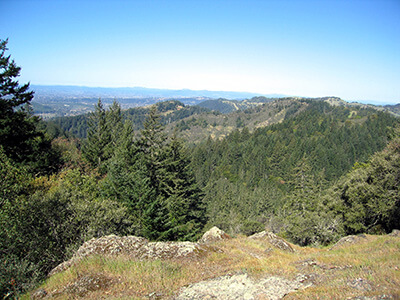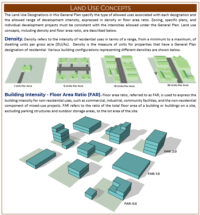Walkers, hikers, and equestrians now have access to a section of wilderness in Sonoma Valley’s Mayacamas Mountains with the opening of a newly-constructed trail at Hood Mountain Regional Park and Open Space Preserve.
Known as the Lawson Trail, the approximately two-mile trail winds from lush creek canyons, up through oak and chaparral woodland and across exposed ridgelines, showcasing scenic views of the Napa hills to the east and Sonoma Valley to the west. The entrance is on Pythian Road, off Highway 121 near Oakmont.
Taking in the full scope of Hood Mountain’s diverse habitats, the trail meanders through a mix of geography and past dramatic cliff faces and rock outcroppings, including a prominent boulder known as “The Spire.” On a clear day, visibility from the trail’s highest point can stretch to San Pablo and San Francisco bays and the Pacific Ocean beyond.
The Lawson Trail provides the first public access to the 247-acre “Lawson Expansion” on the western flank of Hood Mountain.
The new trail skirts the ridge dividing Santa Rosa and Sonoma creeks, giving visitors a sense of a whole watershed, with views to the bays to the west and the wilderness of Hood Mountain and adjacent Sugarloaf Ridge State Park to the east.
The Lawson Trail is the first part of a multi-phased master plan to develop a 4-mile trail network linking the property to the rest of the 2,000-acre park, including connections to Hood Mountain Trail at the Azalea Creek picnic and camp area to the north.

“Parks and trails are essential to our health and wellness, now more than ever, and we’re fortunate to be expanding our parklands and creating opportunities to enjoy nature,” said Regional Parks Director Bert Whitaker. “Exploring the Lawson Trail is a superb way for visitors to escape the stresses of these times and rejuvenate their bodies and minds.”
In addition to the recreational element, preservation of this land helps ensure animals can continue to move freely through the Mayacamas, a significant wildlife corridor. This area also played an important role in containing the 2017 Nuns fire, serving as a staging ground for firefighters and buffering populated areas from the wildfire.
The Lawson property is home to several special‐status plants; encompasses streams that feed into Sonoma Creek, a major tributary of San Pablo Bay; and includes notable pre‐historic and historic cultural resources.
“We protected this prominent ridgeline — and the scenic vistas and native plant and animal habitats that come with it — to preserve critical natural resources and to help create recreational opportunities for our community,” said Ag + Open Space General Manager Bill Keene. “We are thrilled the public will now be able to explore this extraordinary wilderness area, when access to the outdoors is needed more than ever.”
The property lies at a junction of lands once stewarded by three indigenous tribes: the Wappo, Southern Pomo and Coast Miwok. During the late 19th and early 20th centuries, the property passed through several homesteaders before the Lawson family purchased it in the 1960s. The Lawsons were cattle ranchers who also owned and operated a service station at Highway 12 and Melita Road for many years.
Ag + Open Space purchased the Lawson property in 2005, for $1.16 million, and transferred the land to Sonoma County Regional Parks in 2014, contributing $485,000 toward the property’s master planning and natural resource preservation.
Additional funding for planning and trail construction came from grants and the Measure M parks sales tax Sonoma County voters approved in 2018.
The Lawson Trail is reached from Hood Mountain Regional Park’s Pythian Road entrance at 1450 Pythian Road, Santa Rosa. The trail begins approximately 1 mile from the Pythian parking lot, from the Lower Johnson Ridge Trail. Park hours are 8 a.m. to sunset daily. Parking is free for Regional Park members; $7 for non-members. Visit the park webpage at SonomaCountyParks.org for more information.
The Sonoma County Regional Parks system includes 56 parks, beaches and trails. Regional Parks preserves natural and cultural resources and offers opportunities for recreation and education that enhance the quality of life and well-being of residents and visitors.
— Photos courtesy of Sonoma County Parks






Be First to Comment